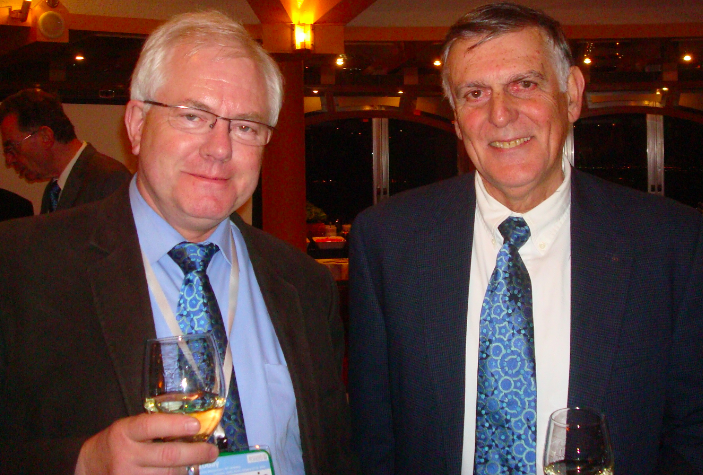
The French scientist Jean-Marie Dubois, PhD in Physics from National Polytechnic Institute of Lorraine (France) is a Distinguished Director of Research at the French National Center for Scientific Research, CNRS (France), where he chairs a committee dedicated to materials chemistry, nanomaterials and processing. He is the former director of Institut Jean Lamour in Nancy (France), a major research institute in field of materials.
His curriculum shows an international scientific trajectory. Dubois holds Honorary Doctorates (Dr Hon. Causa) from Iowa State University (USA) and Federal University of Paraïba (Brazil), is a former “overseas fellow” of Churchill College at University of Cambridge (U.K.) and a permanent visiting professor at Dalian University of Technology (China). He was recently elected as Honorary Member of Jožef Stefan Institute in Ljubljana (Slovenia). He is a member of Lorraine Academy of Sciences (France).
He is the author of more than 250 scientific articles in refereed journals, 14 international patents, and 7 books. His papers were cited more than 5400 times (H index = 39).
Read our interview with the lecturer.
SBPMat newsletter: – Under your viewpoint, which are your main contributions to the field of Materials Science and Engineering? And your scientific/technological contributions with more social impact (patents, products)?

Jean-Marie Dubois: – My first contribution that was aimed at a social impact was the discovery of Al-based metallic glasses, which could be good candidates for light-weight alloys useful for the aeronautic industry. I patented them in 1982, listing a number of favorable examples, and as is the rule for a patent, also counter examples. One such composition was in fact a stable quasicrystal, which was unraveled in Japan few years later. Based on this discovery, I was the first to patent few application niches of quasicrystals that are Al-based intermetallics showing no periodic order as do conventional crystals. The discovery of quasicrystals dates back to 1982, but was published in literature only in 1984, whereas my first patent on these materials was filed in 1988. From that on, I dedicated quite some efforts to discover, patent, and produce new research, about different areas of the physics of quasicrystals including thermal conductivity, adhesion and friction, corrosion resistance, etc. My leadership in this area of materials science is recognized by the international community through the “International Jean-Marie Dubois Award” that is offered every three year “to recognize important, sustained research on any aspect of quasicrystals within the 10-year period preceding the award”. Altogether, I own 14 international patents, with more than 35 extensions. I was responsaible for few tens of collaboration contracts with the industry, including a good dozen of contracts financed by the European Commissions with on average half a dozen of industrial partners and the same number of academic partners. The last one was a so-called Network of Excellence that started the field of Complex Metallic Alloys in Europe, with 20 partner institutions from 12 European countries and some 400 scientists on board.
SBPMat newsletter: – Please choose some of your main publications (about 3 or 4) to share them with our public.
Jean-Marie Dubois:
1) Useful Quasicrystals; J.M. DUBOIS, World Scientific, Singapour (2005), 470 pages.
2) Complex Metallic Alloys, Fundamentals and Applications; Eds. J.M. DUBOIS and E. BELIN-FERRÉ, Wiley (Weinheim, 2010), 409 p.
3) Topological instabilities in metallic lattices and glass formation; J.M. DUBOIS, J. Less Common Metals 145 (1988), 309-326.
4) The applied physics of quasicrystals; J.M. DUBOIS, Scripta Physica, T49 (1993) 17-23.
5) Properties- and applications of complex metallic alloys, J.M. DUBOIS, Chem. Soc. Rev., 41 (2012) 6760-6777.
SBPMat newsletter: – Please give us a short teaser about your plenary talk at SBPMat meeting. What do you intend to broach?
Jean-Marie Dubois: – My talk will be a laudation to the discoverer of quasicrystals who was awarded a Nobel Prize in Chemistry in 2011 for his discovery that forced the scientific community to revise its understanding of ordered condensed matter. Members of the MRS Brazil are used to know what is a crystal, a periodically ordered solid. I wish to introduce them to another type of order in solid, that is not periodic, and leads to unprecedented properties. Alloys that exhibit such a type of order are specific and I call them push-pull alloys. Then, I wish to show that this type of order is not restricted to metallic alloys, but may also be encountered in soft matter like polymers, oxides, artificial nanostructures, and even artistic drawings from ancient Islamic tilings. The talk will therefore be a review for the non-expert in quasicrystals and complex intermetallics
